Walk-In Showers vs Wetrooms

Walk-in showers and wet rooms are two attractive and versatile ways to open up your bathroom. Both are spacious, stylish and come with plenty of customisation options, making them a great choice if you’re looking to freshen up your space.
Additionally, both are popular choices for a number of other reasons including accessibility and the ability to open up the room into looking larger and more spacious. Both walk-in showers and wetrooms are historically associated with being used for people experiencing issues with mobility and standing, including people with disabilities, elderly people, and those with injuries because of the fact they are easier to get in and out of than conventional enclosures. This is covered more later on, however, this benefit has actually been embraced more widely since it is gentler on joints and can help create some truly stunning shower areas without feeling claustrophobic.

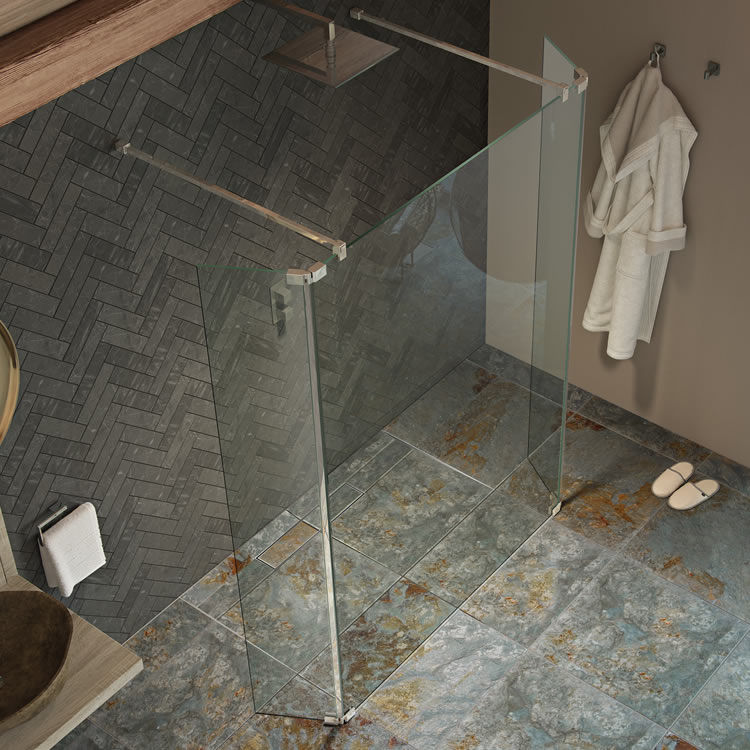
Shower enclosures can also make a room feel smaller since it is built into a specific area and closes off the viewable floorspace. However, with many walk-in showers or wetrooms being able to use single glass shower screens, often frameless, it can extend light across the entire room, as well as retaining the full length of the room making it appear more spacious.
If you’re considering a walk-in shower or a wet room, then there are plenty of other questions about how they work, what choices you have, and how you go about adding one or creating one of these in your bathroom space, which is covered in this guide for you - here is a breakdown of our whistle-stop tour:
- An Introduction to Walk-in Showers
- Walk-in Showers: the Pros and Cons
- Walk-in Shower Frequently Asked Questions
- An Introduction to Wet Rooms
- Wet Rooms: the Pros and Cons
- Wet Rooms Frequently Asked Questions
An Introduction to Walk-in Showers
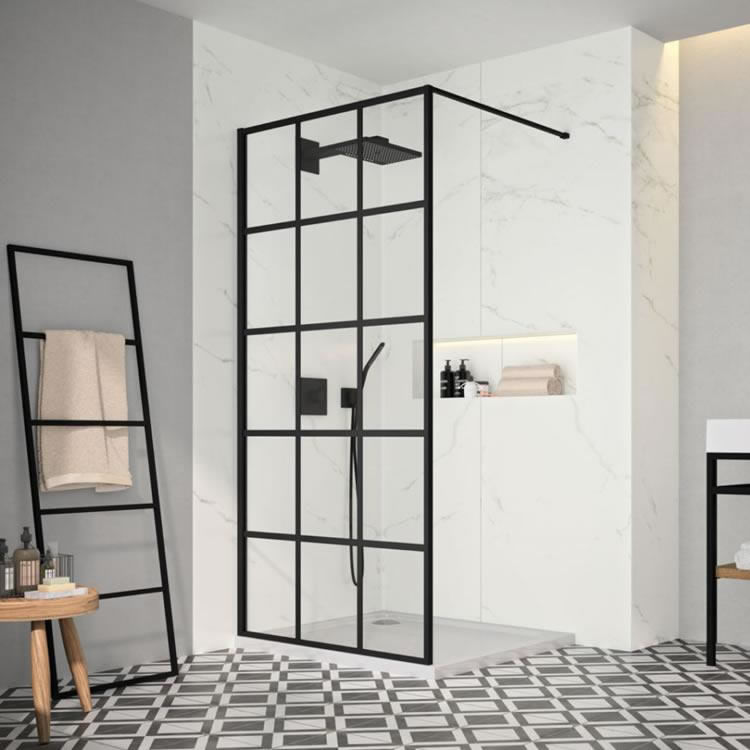
Walk-in showers are, unsurprisingly, showers that you can walk into rather than having to step up into, or - in the cases of showers over baths - completely climb into. Walk-in showers vary from shower enclosures in the following ways too:
- The trays used for walk-in showers are called low profile shower trays due to the fact they have smaller height than those used for shower enclosures. A standard shower tray can be anything from 35mm and above meaning either a ledge or a bit of a climb up to step into the shower. By comparison low profile shower trays sit much lower profile at 25mm or less, the idea being that you can just walk in normally hence the name. This makes them very accessible, as you do not need to worry about the pressure on joints, or having to install anything to grab or hold on to in order to assist in getting in and out for those who require help.
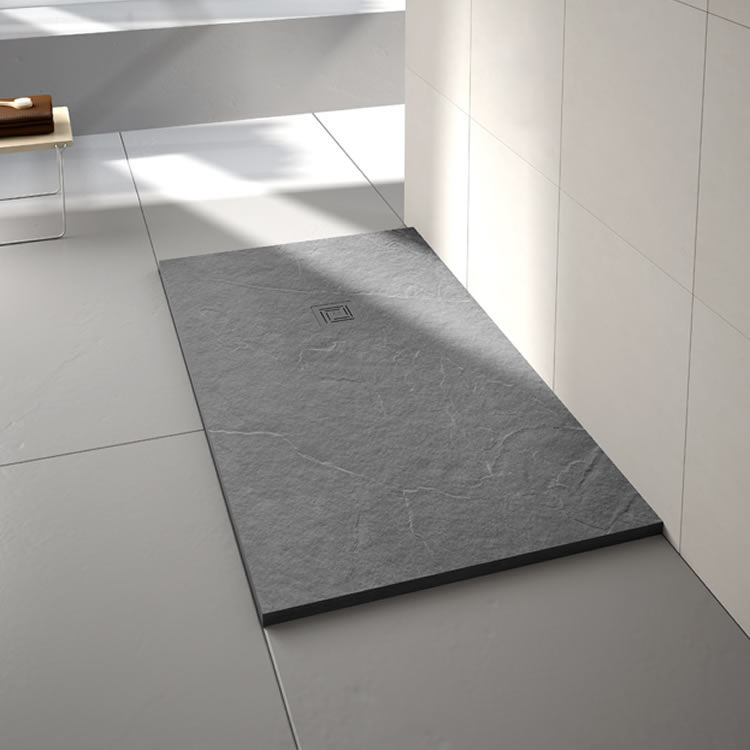
- Walk-in showers are not fully enclosed: in fact, quite often at least part of the shower is open to the room. They can be installed in many configurations that includes anything from a single glass shower screen to a three sided walk-in shower comprised of two side panels and a front panel. This varies from shower enclosures, which are fully enclosed and come with an hinged or sliding doors to enter and exit the shower.
Walk-in Showers: the Pros and Cons
When deciding whether a walk-in shower is right for you, you’ll want to consider the pros and cons. There are more things to think about, but these give a good general overview of the reality of having a walk-in shower in your home.
Pros
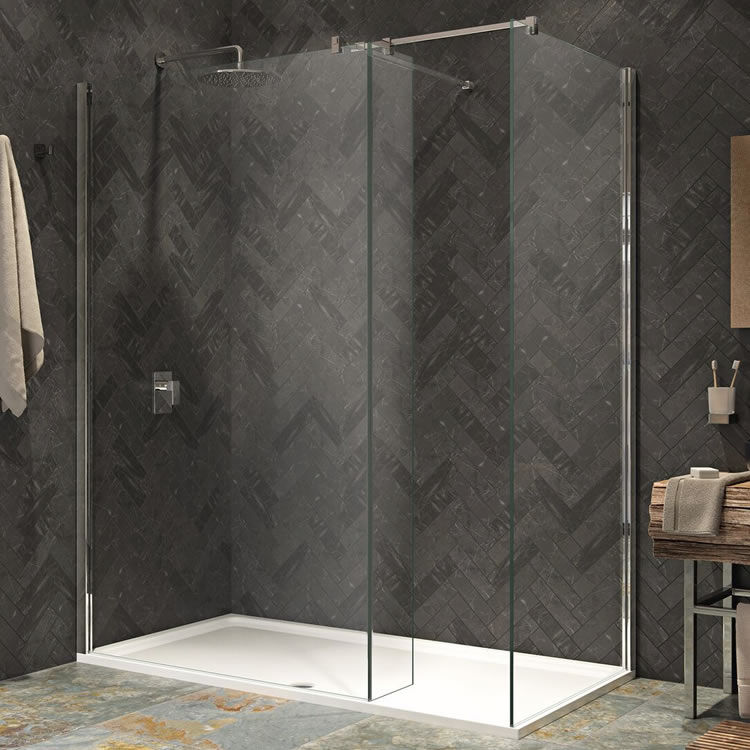
- Stylish & Eye-catching: Walk-in showers are stylish: Search for bathroom inspiration pictures on Pinterest or Google and there’s a good chance you’ll see walk-in showers featuring in many of them. The main reason for this is that they break up the visual flow of the bathroom much less than a traditional shower enclosure, meaning the whole space looks more coherent and attractive.
- They’re convenient to use: for many of us, not having to climb into a shower is only a subtle difference. But it’s still one that feels luxurious every time you do it. And for those of us with mobility issues, the ability to get into a shower without having to climb can be a gamechanger.
- Versatility: Walk-in showers are versatile, and can fit neatly into areas of your bathroom that may not be so well suited to traditional shower enclosures. Using screens means that you get to decide the boundaries of your shower area, offering slightly more control over size and dimension than pre-made enclosures.
Cons
- Temperature: While traditional shower enclosures keep the warm air in with you, a walk-in shower is more prone to letting it escape. If you have a particularly chilly bathroom this can mean a lower average temperature while you’re showering.
- Not always private: Without a shower curtain to rely on, there’s a higher chance that someone might see you showering if they accidentally come into the bathroom while you’re in there!
- Slip risk: Walk-in showers can be slippery when wet, but this is true of other types of shower as well.
Walk-in Shower Frequently Asked Questions
There are many quick questions that people ask frequently about Walk-in Showers and so below is a list of the most common ones found online and answers to them:
Is A Walk-in Shower Cheaper Than A Wet Room?
While exact costs will vary based on the nature of your bathroom and the fixtures and fittings you want, as a general rule, walk-in showers are cheaper than wet rooms. Our bathroom cost guide gives a rough rule of thumb of an approximate bathroom cost but it is always worth budgeting more. However, because they are less complex to install, due to the fact it is not necessary to convert the whole room to be water resistant as well as ensuring appropriate plumbing is in place, which is covered later on, they will work out more affordably than a wet room installation by and large, unless extensive remodeling is being undertaken.
Do Walk-in Showers Wet the Floor?
The idea with a walk-in shower is to keep the water contained in such a way that it drains down the shower tray into the shower waste. Screens are used to achieve this, and if installed properly there’s no reason why water should go beyond the confines of the shower.
How Do You Keep Water in With A Doorless Shower?
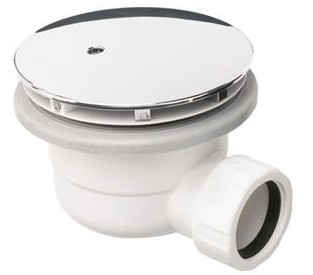
Firstly, many shower wastes that are installed with shower trays are able to aid in removing water quickly. They are often called high flow shower wastes, as they can remove water at high flow rates (often around 30 litres per minute). These aid in preventing pooling on the shower tray, and from water escape. In addition, the screen (or screens) around a walk-in shower act as protective barrier from water escape, ensuring it is kept within the shower itself and flows down the tray to the waste and out.
How Big Should a Doorless Walk-in Shower Be?
There are two ways of answering this question. Firstly, the addressing the actual dimensions of a walk-in shower, the width of is largely up to and around the 900mm mark. There are some larger shower trays available but they may not always be walk-in showers or low profile so it is worth checking before planning bigger. Length-wise, it can be any where up to around 1900mm, although again there are rare instances of shower trays being available that can come lengthier.
In terms of the opening to access the shower, if a single panel this can be as big as you would like it. It is recommended this should be no less than 600mm, however, 700mm (approximately 28 inches) is recommended for comfort. If looking at a walk-in shower with two or more panels, this should always be accounted for in the screen sizes being purchased. As such, if looking at a two-sided 1800mm x 800 walk-in shower, it is important to make sure your front panel leaves a gap this big, so you would need a 800mm panel and either a 1200mm or smaller main screen without compromising on protecting from water escape or comfort.
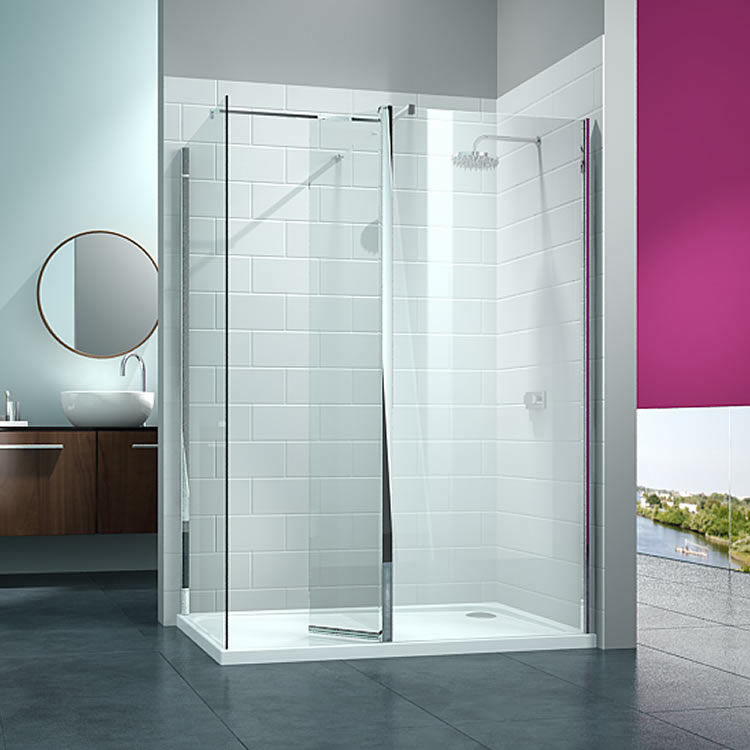
One of the great things about walk-in showers is that they can create the illusion of space in compact areas. They’re also a great way to really leverage the space in spacious bathrooms. So, again, the answer to this question varies on a case by case basis! The walk-in shower should be the right size for the space you have to work with.
An Introduction to Wet Rooms
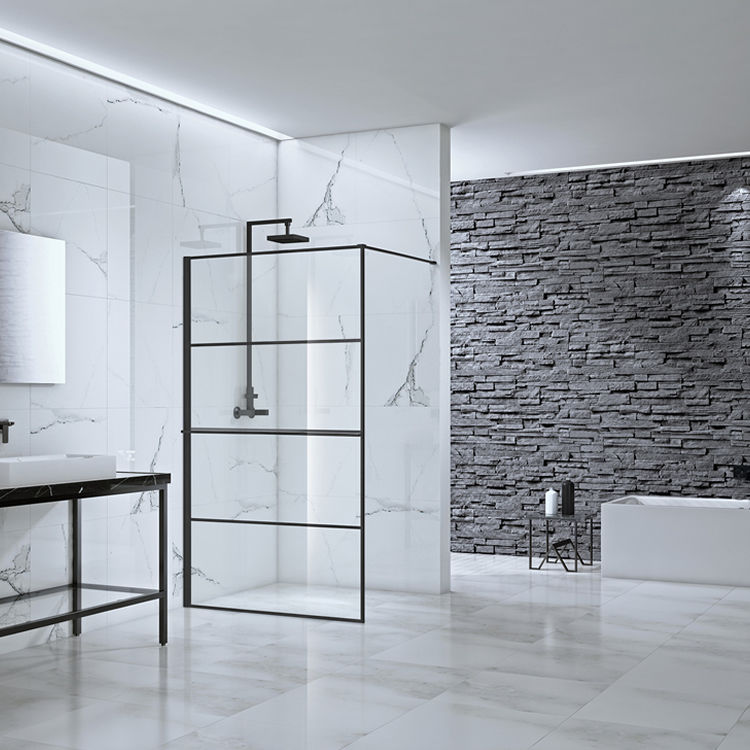
Where walk-in showers are designed to keep the water within the boundaries of the shower itself, ideally to drain via the shower tray, true wet rooms are more open-plan and designed in such a way that all water from the room flows out via a drain in the floor. Additionally, whereas walk-in showers do still have a slight lip from the low profile shower tray, wet rooms are always floor-level and completely flat. Whereas walk-in showers use a conventional shower tray, wetrooms are installed with a wet room shower tray or installation kit. This is built into or recessed into the floor, which can then then be covered in your flooring of choice, such as tiles.
Some wetrooms are completely open as part of the bathroom, however, many people still choose to install a glass screen to create a separate showering area and close it off from the rest of the bathroom.
Wet rooms are fantastic for people with disabilities or mobility issues, as they remove all obstacles from entering and exiting the shower. If you rely on a wheelchair or some other mobility aid, you will most likely find it easier to shower unassisted in a wet room than you would in other alternatives.
Wet Rooms: the Pros and Cons
Here are some things to think about with wet rooms. This isn’t an exhaustive list of pros and cons, but it’s a good starting point when deciding whether or not this type of shower is right for you.
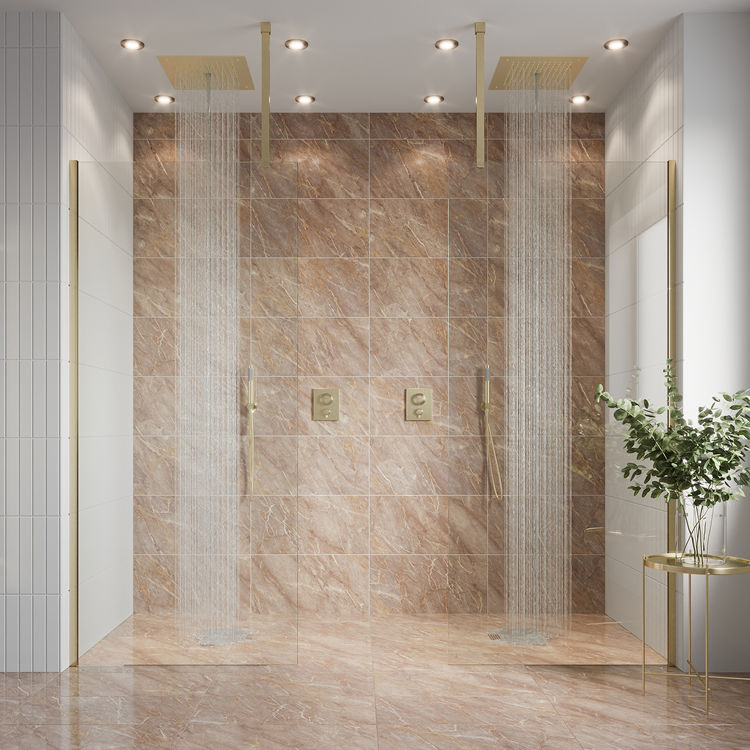
Pros
- Wet rooms are very easy to clean: depending on the design you go for, your cleaning regimen may only include using a squeegee to get rid of any excess water. It may be the case that you have a screen to clean occasionally, but it’s still likely to be less total cleaning than a shower over a bath.
- Wet rooms are so easy to use: you just get undressed and walk in. Whether or not you find climbing into a regular shower tricky, there’s something undeniably luxurious about just walking in.
- Space: This type of shower is a good space saving option, too. If tight space means you can’t get hinged doors to fit comfortably, why not go for a wet room instead and sidestep the issue completely?
Cons
- Installation: Wet rooms are trickier to install than other shower options, because you need to be completely sure that all water can drain away and this often involves making changes to the floor that would be unnecessary for traditional showers. In a traditional shower standing water isn’t a big issue because it won’t cause lasting damage to the shower tray, whereas with a wet room, standing water can quickly become problematic.
- More Expensive: This consideration means that installing a wet room is often more expensive than other types of shower. Of course if you’re looking at a wet room for mobility reasons there is support available that may help you to offset these costs.
- Value when selling homes: It might be hard to recoup the costs, too: not everyone will want a wet room in their house, meaning you could find it more tricky to sell your property when you move.
Wet Rooms Frequently Asked Questions
Here are some questions related to walk-in showers that people frequently ask and that we have compiled to help you out:
How Much Does It Cost to Install A Wet Room?
Like the section on walk-in showers, it is not possible to advise on specific costs because there are so many variables, ranging from the fixtures you choose to the size of the space. You should always budget between £6,000 and £10,000 for fixtures and installation for any bathroom space, however, it is worth getting quotes and checking before you start planning, as this may alter depending on the plumbing and work required. Alternatively, it may not be entirely practical to install a wet room in the space being renovated.
Does A Wet Room Devalue Your House?
A wet room won’t necessarily lower the value of your home, but it may make it harder to sell as prospective buyers might decide it’s not aligned with their needs. It is worth mentioning, though, that any investment in a bathroom should never be about selling on since everyone's taste is different, and it may get changed by any prospective buyer. In fact, view it as an investment for yourself.
Can You Have A Toilet in A Wet Room?
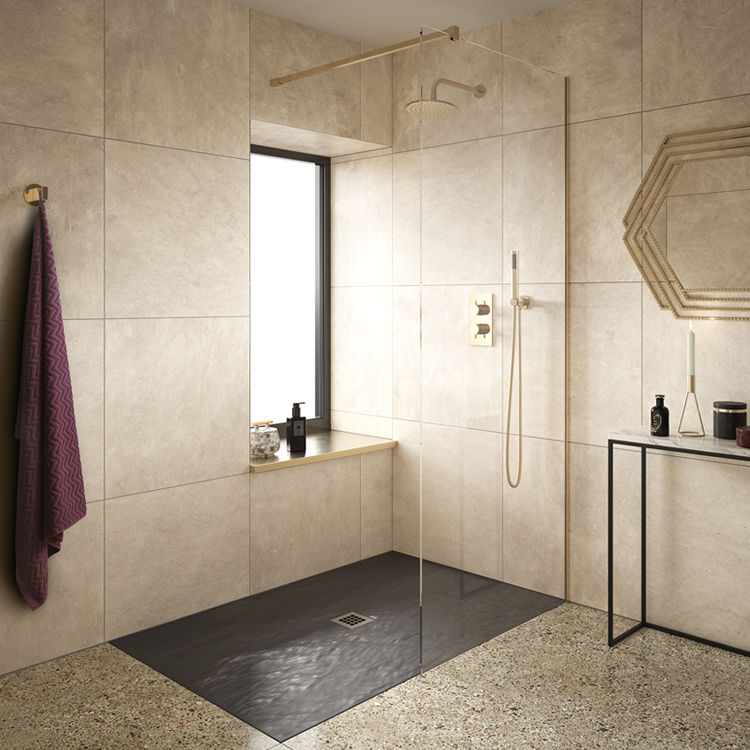
Yes: a wet room is no different to any other bathroom space and can include a shower, basin, toilet, and even a bath in a wet room, although quite often these rooms are designed in such a way that they only have a shower, rather than a shower and a bath.
Do Wet Rooms Get Mouldy?
If you look after your wet room properly there’s no reason for it to go mouldy. The key things to do are ventilate the space with an extractor fan if one can be installed or that it has a window (or both ideally), keep it clean, and prevent excess moisture from building up. You need to make sure the right sealant is used on installation as well: if you hire a tradesman they will be responsible for this.
Are Wet Rooms Hard to Keep Clean?
Because there aren’t as many (or any!) screens and trays, cleaning a wet room is often easier than cleaning a traditional bathroom. You can hose down the whole room as well, assured that all the water will flow down the central drain.
Walk-in Shower or Wet Room: Which Do You Prefer?
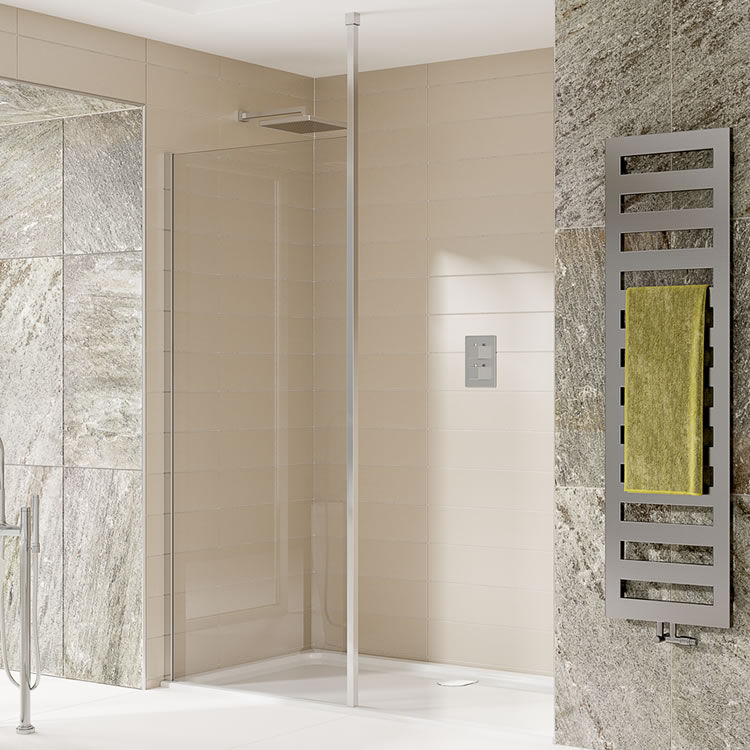
Whatever your reasons for researching walk-in showers and wet rooms, we hope this blog post has been useful in helping you to conceptualise the differences between the two, and their relative pros and cons.
If you’re ready to take the next step, we’ve got decades of experience in helping our customers to get the perfect shower for their bathroom, whatever their needs and their budget. Why not book a 3D Bathroom Design Service appointment where we can show you the best way to incorporate a walk-in shower or wet room into your home.